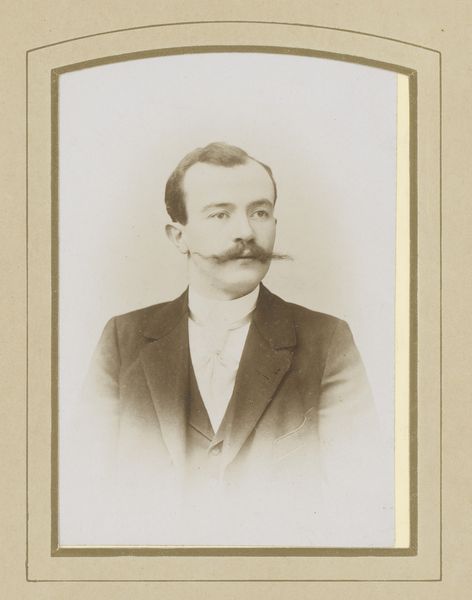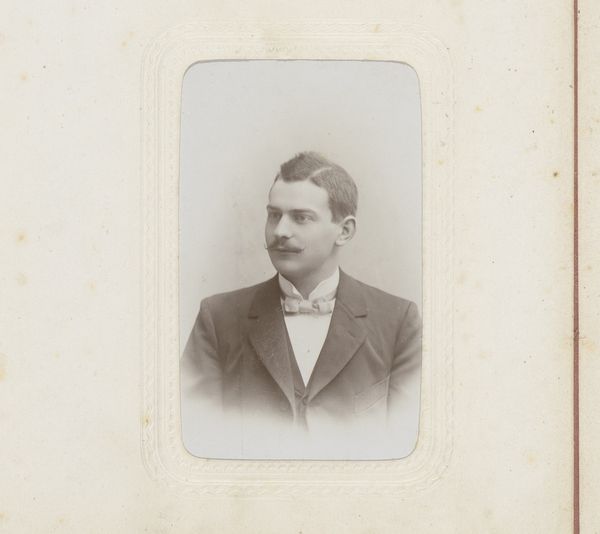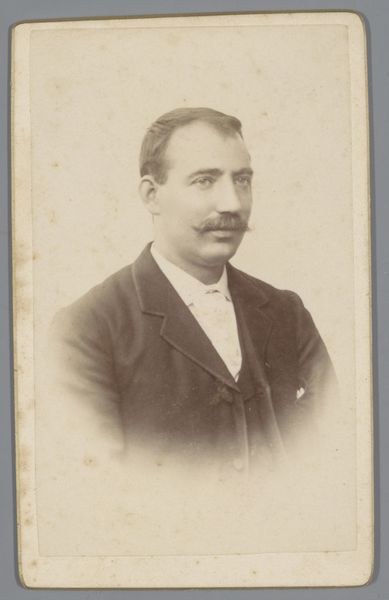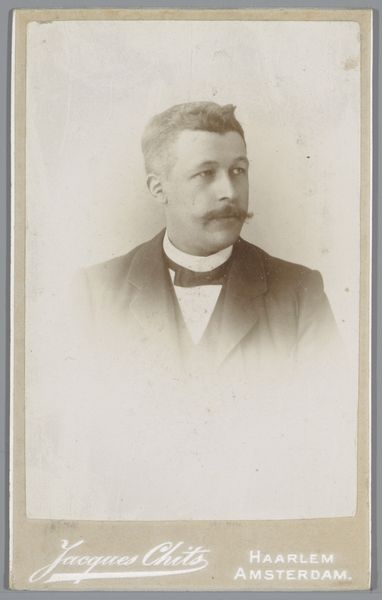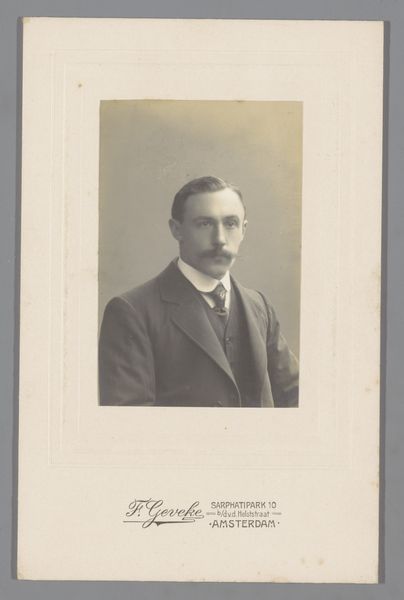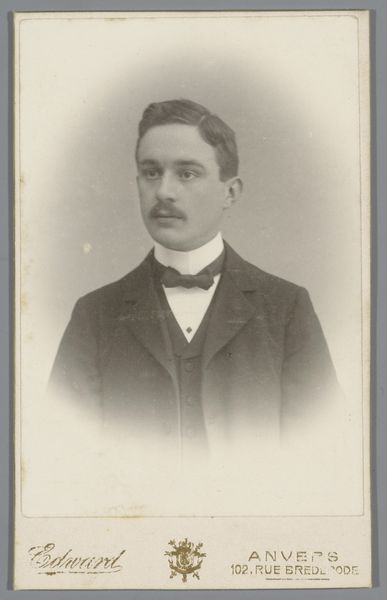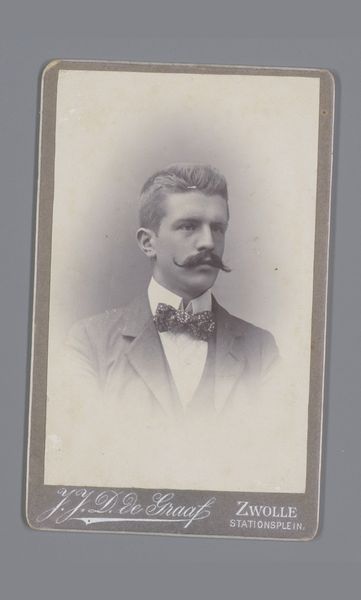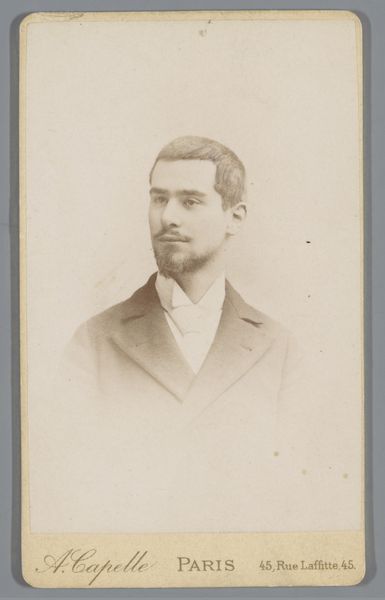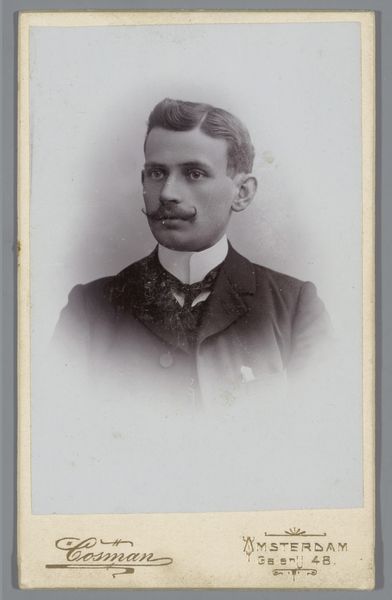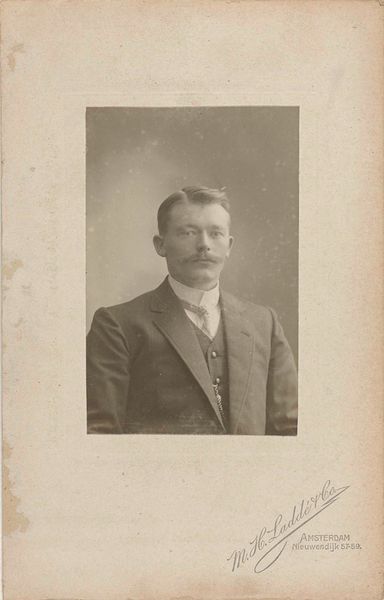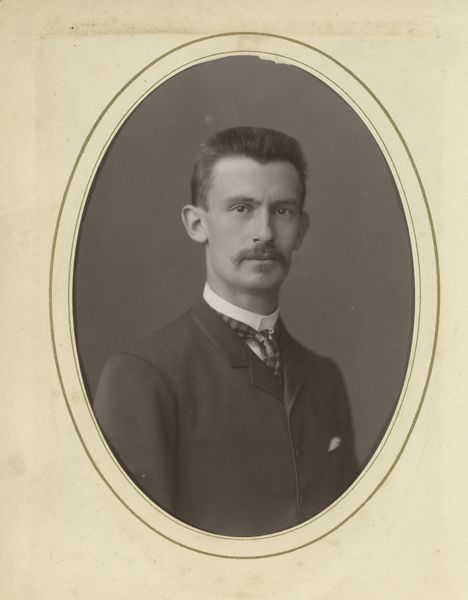
photography, gelatin-silver-print
#
portrait
#
photo restoration
#
light coloured
#
photography
#
framed image
#
gelatin-silver-print
#
realism
Dimensions: height 105 mm, width 64 mm
Copyright: Rijks Museum: Open Domain
This is a photograph of an unknown, moustachioed man, created by C. Hornig in Paris. It's a small image, made using a photographic process called "carte de visite." The carte de visite was a 19th-century innovation, and it became incredibly popular. These were produced using a special camera with multiple lenses, allowing for several exposures on a single glass plate negative. This meant that many prints could be made quickly and cheaply. Think about it: photography had once been a very specialized, expensive affair. All of a sudden, with this technology, it became available to a much wider range of people. This portrait is a testament to the rise of a new, more democratic visual culture, and the industrialization of image-making. While we don't know who this particular man was, the very existence of this photograph tells us something about the changing social landscape of the time, and the mass production of images. It reminds us that even the most intimate portraits are shaped by the technologies and economies that make them possible.
Comments
No comments
Be the first to comment and join the conversation on the ultimate creative platform.
